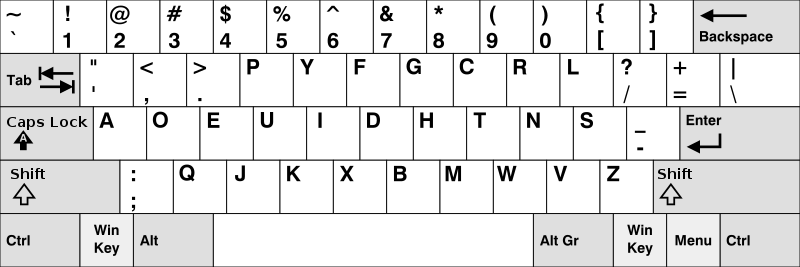The QWERTY keyboard layout developed by Christopher Latham Sholes in 1874 for the typewriter was designed to be the most efficient layout possible for the English language. The idea was that the person typing move their fingers between the rows to type the most common letters. It is also told that the arrangement of the keys was designed to reduce the possibility of typebars hitting each other by placing often used combinations of letters further away from each other. The QWERTY layout now has become the de facto standard for English language keyboards.
The French-speaking countries often use the AZERTY layout which switches the Q for an A and W for Z. The M key has moved to the right of the L key and some special characters are accessible with the shift key.
The QWERTZ layout used in central Europe (Germany, Austria, Switzerland, and Czech Republic) swapped the Y and Z key, as well as special characters such as brackets, are replaced with characters such as Ä, Ö, Ü, ß.
The Dvorak layout was developed by August Dvorak in 1936 with the intention to be more efficient than the QWERTY layout and it is also better suited to right-handed people. Distance measurements showed that the Dvorak layout reduces your hand movement to almost half of that of the QWERTY layout. After getting used to the key arrangement users saw an increase in typing speed up to 10-15%.

Source: Wikimedia Commons
Sources:
The Great Keyboard Debate: QWERTY versus Dvorak
Typewriter (https://en.wikipedia.org/wiki/Typewriter)
Keyboard Layout (https://en.wikipedia.org/wiki/Keyboard_layout)

